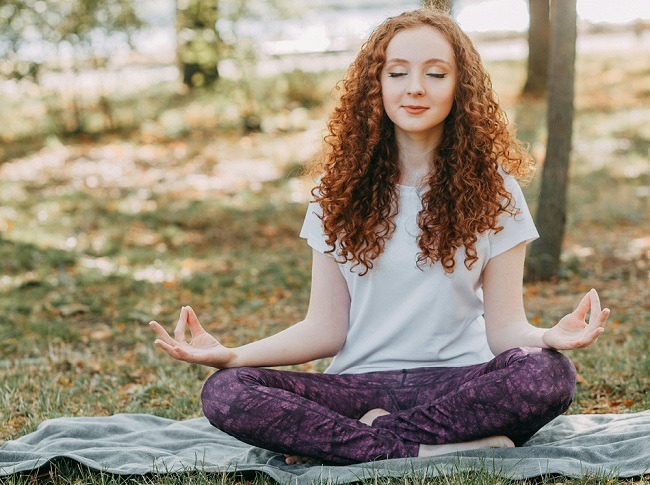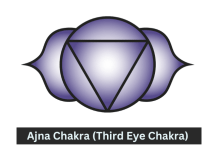
Siddhasana, known as the Accomplished Pose, is a classic seated yoga asana with a long history in traditional Indian practices. It is renowned for its ability to steady the mind and body, making it an ideal posture for meditation and pranayama (breath control) exercises. Siddhasana is highly regarded for its profound effects on the nadis (energy channels) and chakras (energy centers) within the body, enabling practitioners to access higher states of consciousness and spiritual awareness. In this article, we delve into the benefits, steps to practice, and the spiritual significance of Siddhasana.
The Symbolism and Meaning
The word “Siddhasana” is derived from two Sanskrit words: “Siddha,” which means “accomplished” or “perfected,” and “asana,” which means “pose” or “seat.” In this seated posture, the practitioner achieves a state of stillness and stability, symbolizing the union of opposites and the integration of physical, mental, and spiritual aspects of the self.
Steps to Practice Siddhasana
Performing Siddhasana requires precision and patience to attain the full benefits of the pose. Follow these steps to practice Siddhasana:
1. Sit on the floor with your legs extended forward.
2. Bend your left leg and draw the left heel towards your perineum, placing it against the right thigh.
3. Now, bend your right leg and tuck the right heel into the space between the left calf and thigh.
4. Ensure that your knees are in contact with the ground, and your feet are pointing directly upward.
5. Place your hands on your knees or in Jnana Mudra (the thumb and index finger gently touching) with palms facing up.
6. Lengthen your spine, lifting your chest and relaxing your shoulders.
7. Close your eyes and soften your gaze, bringing your focus inward.
8. Maintain a comfortable but steady and alert posture.
9. Breathe deeply and evenly, engaging in meditation or pranayama as desired.
10. To release the pose, extend your legs forward and shake them gently to restore circulation.
Benefits of Siddhasana
1. Stability and Stillness: Siddhasana allows the body to be rooted firmly to the ground, creating a stable base for meditation and pranayama practices.
2. Meditative Focus: The seated and balanced position aids in maintaining focus and concentration during meditation.
3. Awakens Muladhara Chakra: By pressing the heel against the perineum, Siddhasana activates the Muladhara Chakra, promoting grounding and a sense of security.
4. Balances Energy Flow: The pose encourages the balanced flow of prana (life force energy) throughout the body, harmonizing the nadis.
5. Stimulates Digestive Organs: Siddhasana aids in improving digestion and alleviating gastric discomfort.
6. Enhances Flexibility: Consistent practice of Siddhasana gradually increases flexibility in the hips and knees.
Spiritual Significance
Siddhasana is not merely a physical pose; it holds deep spiritual symbolism and significance. The energy centers, particularly the Muladhara and Svadhisthana Chakras, are activated during this posture. The Muladhara Chakra, associated with the element of earth, is the foundation of the spiritual journey, while the Svadhisthana Chakra, linked to the element of water, governs emotions and creativity. The integration of these energies is crucial for spiritual growth and higher consciousness.
Moreover, Siddhasana is considered a key step in mastering the practice of Kundalini yoga. The awakening of the dormant Kundalini energy, often visualized as a coiled serpent, is said to be facilitated through the consistent and dedicated practice of Siddhasana and other related techniques.
Precautions and Contraindications
While Siddhasana offers numerous benefits, it may not be suitable for everyone. Avoid practicing Siddhasana if you have:
– Knee or ankle injuries
– Hip issues or limited hip flexibility
– Sciatica or lower back pain
– Pregnancy
If you have any medical conditions or concerns, consult a qualified yoga instructor or healthcare professional before attempting Siddhasana.
Siddhasana, the Accomplished Pose, exemplifies the union of physical, mental, and spiritual aspects in the path of yoga. It serves as a powerful tool to steady the mind, awaken energy centers, and access deeper levels of consciousness. As with any yoga practice, approach Siddhasana with patience, respect, and mindfulness, allowing yourself to progress at your own pace. Through regular and dedicated practice, Siddhasana can become a transformative posture that facilitates self-discovery and spiritual awakening.











































